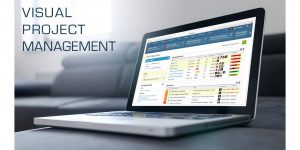Project cost management is an evergreen feature in all projects: big or small, from IT to construction. In fact, all projects require the purchase of any type of material or service.
Regardless of the scope or the program, projects need funds to complete the work.
Technically, even projects that use only manpower needfunds. Someone in fact is paying for that job.
Project cost management concerns the process of planning and controlling the project budget.
Without project cost management, the organization could lose its revenue as costs could outweigh profits.
TABLE OF CONTENTS
The activities of Project COST management
Project cost management includes activities such as:
- planning;
- estimation;
- budgeting;
- funding;
- management and control of costs
so that the project can be completed within the approved budget limits.
Cost management covers the entire project life cycle, from the initial planning stage to the measurement of actual cost performance and project completion.
What is the process of project cost management?
Cost management is a way of managing the total cost of the project and takes place in four phases, called the planning phase:
1) Resource planning
In the initial phase of a project, it is necessary to define the resources necessary to complete the project activities. This includes the team members who make up the project team.
Work Breakdown Structures (WBS) and historical information of similar projects can be used in order to define which physical resources (and not) are needed. It is possible to think about time, material, work, equipment, etc.
Once all types of resources and quantities are known, the estimation of the associated costs can be determined.
2) Estimate costs
Several cost estimation methods can be applied in order to predict how much it will cost to perform project activities.
The choice of the estimation method depends on the level of information available.
Estimates based on the actual cost of similar prior projects can serve as a basis in order to estimate the current project.
Another option is to use parametric models in which the characteristics of the project are represented mathematically.
Estimates can be refined when more information becomes available during a project.
At the end, this translates into an estimate of unit costs with high accuracy.
3) Cost budgeting
Cost estimation forms, together with a project plan, the input for the cost budget.
The budget gives an overview of the periodic and total costs of the project, including the variable costs that may change over time.
Cost estimates define the cost of each work package or activity, while the budget allocates costs in the period when the cost will be incurred.
A cost baseline is a budget approved that is used as a starting point for measuring actual performance progress.
4) Project cost control

Cost control concerns
- changes in the baseline measurement of costs
- the adoption of effective corrective actions in order to stay at a minimum cost.
The procedures are applied to monitor expenses and performance against the progress of a project.
All changes to the baseline of costs must be recorded and the final total costs expected are constantly forecast.
When actual cost information becomes available, an important part of cost control is to explain what is causing the change from the baseline.
Based on this analysis, corrective actions may be needed in order to avoid cost overruns.
Suggestions for a correct management of the project cost
- Take inflation into consideration: any good cost management plan should take price increases into account.
- Considering hypothetical natural disasters or potential events: expecting the unexpected may seem silly, but it is necessary to have a budgetary buffer for a meteorological event, a personal problem, or some other unknown factors that could delay the project.
- Other unexpected costs: not all unexpected costs are random. Thanks to a structured risk management activity, it is at least possible to define the risk values according to the project. There may be legal problems, penalties associated with the project or unforeseen labor costs, for which it is not possible to provide a specific budget, but it is possible to prepare a buffer.
- Real time tracking: having software that allows to monitor the budget during project execution is essential for cost management. If we analyze data that is not current, it will be difficult to act quickly enough to solve the problems.
- Respond promptly: regardless of how a discrepancy exists in the cost of the project, it is necessary to act immediately. The longer you wait, the more money will be wasted.
- Dimension: Some people think that smaller projects do not need project cost management. Small or big, in every project you have to manage costs.
To better manage the costs of the project, it is necessary to know the project inside and out, in all its details.
Project managers are in a difficult situation; in fact, they are the link between the customer and the project team that will complete the client’s project.
In most organizations, it is generally easier to get “more time” than “more money”, and there is usually more concern about how much it is spent rather than how much time is needed to complete a project.
Project managers and their stakeholders must enter any project with a common goal: to identify an accessible area and a plan on how to achieve it.
Too often, the cost is ignored in the project planning. But someone will eventually have to pay the bill, so why not make everything more organized and peaceful?
Therefore, it can not be ignored that cost management is essential for the success oIt cannot, therefore, be ignored that cost management is important from an early stage for the success of the project.
In addition, careful management today also allows for better planning of future projects.
It can not be ignored that for an effective monitoring and if you want to intervene promptly in the management of costs, it becomes essential to have a project management software that tracks data in real time, such as Twproject.
The use of advanced tools such as Twproject makes it possible to centralise all project information, making it quickly and easily accessible to all involved stakeholders and team members. This ensures greater operational transparency and improves internal communication, two crucial elements in keeping objectives, timeframes and investments aligned.
In addition, Twproject allows the generation of automatic and customisable reports, ideal for analysing the economic and technical performance of a project. In this way, critical areas or activities that are generating cost deviations can be identified at an early stage, enabling targeted corrective action.
Another key aspect concerns risk prevention. It is possible to simulate alternative scenarios and assess the potential impact of any problems before they actually occur. This proactive approach significantly reduces the probability of exceeding the economic limits of the project.
In contesti altamente competitivi, dove ogni euro speso deve produrre valore, saper gestire le risorse in modo efficace non è più un’opzione, ma un’esigenza strategica. La governance dei progetti, quindi, deve necessariamente includere una visione integrata dei processi, dove analisi predittiva, controllo puntuale e capacità di adattamento diventano gli strumenti chiave per il successo.
In highly competitive environments, where every amount spent must produce value, knowing how to manage resources effectively is no longer an option, but a strategic requirement. Project governance, therefore, must necessarily include an integrated view of processes, where predictive analysis, timely control and adaptability become the key tools for success.
Finally, it is worth emphasising how a culture oriented towards financial performance and the measurement of results favours not only the success of individual projects, but also the growth of the entire organisation.
Those who invest in the professionalisation of project management build a solid foundation to face future challenges with confidence, with more informed decisions, smoother processes and tangible results.



